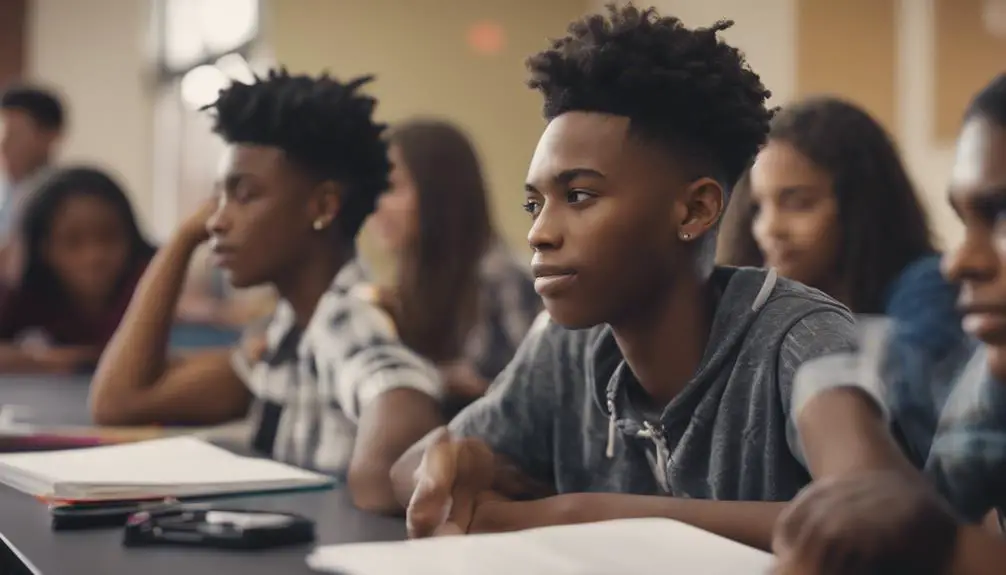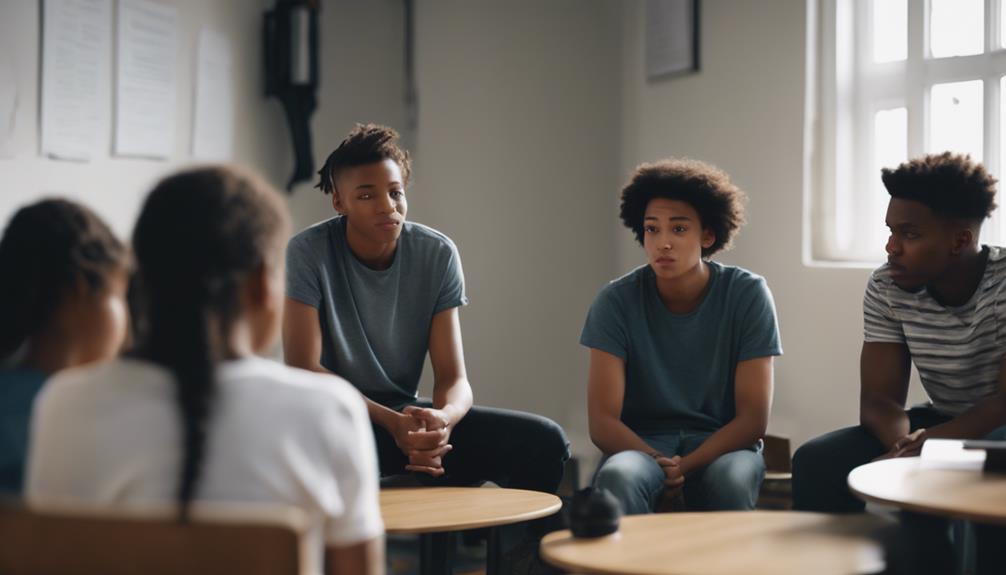Laughter is the best medicine, and this holds true even in the classroom! As a teacher, incorporating humor into your lessons can have a significant impact on your students’ learning experience.
Aside from boosting engagement and retention, using humor can also create a more relaxed and positive classroom environment, which can foster creativity and collaboration among students. In this blog post, we’ll discuss 14 benefits of using humor in the classroom that you might not have thought about before.
So let’s get started.
Importance of Using Humor in the Classroom
The following are some of the benefits of humor in the classroom:
1. Attention maintenance: Humor keeps students engaged and focused on learning.
Humor is an essential tool for maintaining students’ attention and engagement in the classroom. Through laughter and enjoyment, students are more likely to remember the material and participate in the learning process. The use of humor also helps to create a comfortable and positive learning environment where students feel encouraged to express themselves creatively and imaginatively.
When teachers incorporate humor into their lessons, they establish a relationship with their students that promotes openness, respect, and mutual understanding. As a result, students are more likely to feel motivated, confident, and enthusiastic about learning, enabling them to reach their full potential.
Thus, the use of humor in the classroom is a powerful strategy that can ultimately lead to better academic outcomes and personal growth for students.
2. Burnout prevention: Laughter can prevent burnout in both students and teachers.
Another significant benefit of using humor in the classroom is that it can prevent burnout for both teachers and students. As previously discussed, laughter is an effective stress-reduction technique and can help teachers maintain a positive perspective on their work. By injecting humor into their lessons, teachers create a more enjoyable work environment that can help boost morale and prevent feelings of burnout.
Similarly, laughter can also prevent student burnout by making learning more enjoyable and engaging.
When students are laughing, they are more likely to be interested in the material and retain what they have learned. As a result, they are less likely to feel stressed or overwhelmed by the demands of the classroom. Overall, incorporating humor in the classroom can be a valuable tool for creating a positive, engaging setting conducive to learning and preventing burnout for both teachers and students.
3. Positive perspective: Humor makes teaching more enjoyable and helps maintain a positive outlook.
In addition to keeping students engaged and helping prevent burnout, using humor in the classroom can also have a positive impact on teachers themselves. Humor makes teaching more enjoyable and helps teachers maintain a positive outlook.
When teachers approach their job with a sense of humor, they are more likely to see the fun and joy in their work. This, in turn, can make teachers more effective and better able to connect with their students.
By setting a positive tone in the classroom, teachers can create an environment that is conducive to learning and growth. Overall, the use of humor in the classroom has numerous benefits, both for students and for teachers.
4. Stress reduction: Laughter can help reduce stress levels in the classroom.
In the classroom, stress can be a major hindrance to learning for both students and teachers. Luckily, the use of humor in the classroom can help reduce stress levels and create a more relaxed learning environment.
When students laugh, they release tension and can change their perspective on what is causing their stress. Incorporating humor also helps to maintain students’ attention and increase engagement, which can ultimately lead to a more positive learning experience.
Additionally, when teachers use humor, they set an example for their students that laughter and joy are important components of the learning process. By reducing stress levels, humor contributes to a more positive and productive classroom environment for everyone.
5. Increased engagement: Students are more likely to pay attention when laughing.
When students are laughing, they are fully engaged in the learning process. Humor has been proven to increase student engagement, making them more willing to pay attention and retain information.
By incorporating humor into lessons, teachers can create a positive learning environment that promotes active participation and open communication. Students who are engaged and motivated to learn are more likely to succeed in the classroom and beyond.
Moreover, humor also helps students relax and distress, allowing them to better process and retain the information being presented. By regularly incorporating humor into lessons, teachers can establish a connection with their students that will not only enhance their experience in the classroom but also foster a lifelong love of learning.
6. Learning relationships: Humor builds a relationship between teachers and students through joyful learning.
In addition to its educational benefits, humor also plays a crucial role in building relationships between teachers and students.
By infusing the classroom with positive laughter and lightheartedness, teachers create a joyful and comfortable learning environment that fosters mutual respect, openness, and engagement.
Humor allows teachers to connect with students on a personal level, breaking down barriers and forming deeper relationships built on trust, empathy, and understanding.
Moreover, by sharing this joyful learning experience, students are more likely to associate their education with positive emotions, leading to a more meaningful and lasting impact. Ultimately, the use of humor in the classroom builds not only educational success but also meaningful and long-lasting relationships.
7. Anger release and forgiveness: Humor can help students put problems into perspective, leading to forgiveness and the release of anger.
In addition to keeping students engaged and reducing stress levels in the classroom, the use of humor by teachers can also lead to anger release and forgiveness in students. By bringing humor into the learning environment, teachers can help students put their problems into perspective and view them in a less threatening manner. This can ultimately lead to forgiveness and the release of anger that students may feel toward a particular situation.
With humor, students are able to take a step back and see the situation through a different lens, allowing them to approach it in a more relaxed and positive way. Teachers who use humor in their classrooms play an important role in creating a joyful and humorous environment, which can foster growth and learning in their students.
8. Relaxation and engagement: Laughter helps students relax and engage in learning.
When it comes to learning, relaxation is key.
When students feel relaxed, they are more likely to engage in the material and retain information. Laughter is a great way to create a relaxed atmosphere in the classroom.
When teachers incorporate humor into their lesson plans, students are more likely to be at ease and engage in the learning process. Laughter is a natural stress reliever and can help students stay focused for longer periods of time.
It also helps to build rapport between students and teachers, which can lead to a more positive learning experience. By creating a relaxed and engaging learning environment through the use of humor, both students and teachers can enjoy the learning experience and achieve better results.
9. Permission to be ridiculous: Teachers who use humor give students permission to be creative and imaginative.
One of the benefits of using humor in the classroom is that it gives students permission to be creative and imaginative. Teachers who use humor in their lessons show students that it’s okay to be a little silly and to think outside the box. This helps to create a more relaxed and playful learning environment, which can lead to increased engagement and better learning outcomes.
When students are encouraged to be creative and imaginative, they are more likely to come up with unique solutions to problems and to think critically about complex concepts. Teachers who use humor are also more likely to build a positive relationship with their students, which can lead to better communication and a stronger sense of community in the classroom. Overall, incorporating humor into lessons can have numerous benefits for teachers and students alike.
10. It can help students cope with difficult topics, giving them a new perspective.
Using humor in the classroom can be a powerful tool for helping students cope with difficult topics and gain a new perspective. Research shows that humor can reduce tension and promote bonding among students, increasing group cohesion in the classroom.
By injecting occasional humor into writing assignments, teachers can start conversations about what is funny and how students know it. Humor can also prevent burnout and reduce stress for teachers, making the classroom experience more fun and positive.
Furthermore, humor can create a relaxed classroom environment where students feel comfortable discussing sensitive topics. Humor can be particularly useful for making tedious or challenging topics more engaging, boosting students’ ability to learn, and helping them to do their best. Overall, using humor in the classroom is a valuable strategy for building a positive learning environment and promoting student success.
11. It can break down barriers and help diverse groups of students connect.
Using humor in the classroom can create a positive learning environment by breaking down communication barriers between students, especially those from diverse backgrounds. It is a natural icebreaker that helps connect children regardless of their differences.
When students feel comfortable enough to laugh together, they are more likely to engage with each other and the teacher. This engagement leads to a sense of belonging in the classroom, which is crucial to a student’s academic success. Humor also reduces classroom conflict and increases student learning.
Beyond making someone laugh, humor in the classroom can build class cohesion and help students cope with stress easier. By engaging and motivating students through the use of humor, teachers can create a learning relationship that promotes joy, reduces stress, and increases learning.
12. Humor encourages students to take risks and be unafraid of failure.
Using humor in the classroom has been shown to have a positive impact on student learning. A key benefit is that humor helps to create a supportive learning environment where students feel comfortable taking risks and are unafraid of making mistakes.
When teachers use humor in the classroom, they are able to lighten the mood and reduce barriers between themselves and their students. This helps to build rapport and trust, which in turn makes it easier for students to express their ideas and engage actively in the learning process.
Humor also encourages trial and error, as students are more willing to experiment and make mistakes in a supportive environment. Through the use of humor, students can build confidence and take risks, knowing that failure is an important part of the learning process.
13. Humor can help students develop emotional intelligence and empathy.
Using humor in the classroom can have a positive impact on students’ emotional intelligence and empathy. Correlational analyses have demonstrated that self-enhancing humor is associated with cognitive empathy, affective empathy, sympathy, and affiliative relationships. Humor can help build a learning relationship through the joyful confluence of head and heart.
It reduces stress and anxiety, and increases self-esteem, self-motivation, and psychological well-being. Students who are engaged in social-emotional learning activities are developing crucial life skills that go beyond academics.
When teachers use humor, they can keep their students engaged and make school more fun, which can lead to increased enthusiasm for learning. A study even found that having a good sense of humor is correlated with emotional intelligence.
Therefore, incorporating humor into the classroom can aid in developing emotional intelligence and empathy among students, making them more empathetic and better equipped to respond to social situations with emotional intelligence.
14. A good sense of humor can make learning fun and enjoyable for everyone involved.
Using humor in the classroom has been shown to have many benefits for both students and teachers. It is a powerful tool that can help keep the classroom alive and facilitate learning.
Through the use of humor, the classroom becomes a more enjoyable and comfortable environment for everyone involved. Humor is a natural icebreaker that connects students, reduces classroom conflict, and captures each student’s attention.
It enables the teacher to engage with the students and establish rapport with them, creating an environment that is open and conducive to learning. Research has shown that learning should be fun, and using humor in the classroom is an effective way to achieve this.
It allows everyone to share the present moment together and makes the learning process more enjoyable for all.
Furthermore, when a teacher uses humor in the classroom, students perceive the teacher as approachable and friendly, which can foster positive teacher-student relationships. Overall, humor is a valuable tool that promotes fun and enjoyable learning experiences for everyone involved.
Conclusion
In conclusion, using humor in the classroom has many benefits for both students and teachers. It can create a positive and engaging learning environment, promote critical thinking and problem-solving, as well as foster social bonds, and promote emotional intelligence. So, don’t be afraid to crack a joke or two in class.












